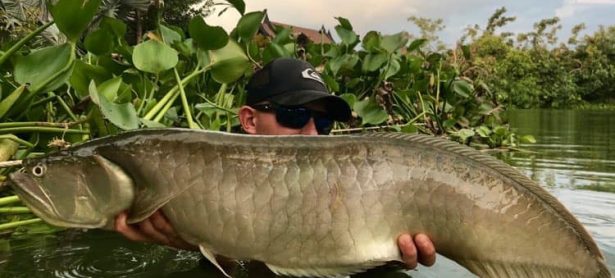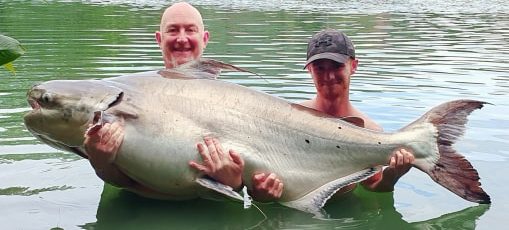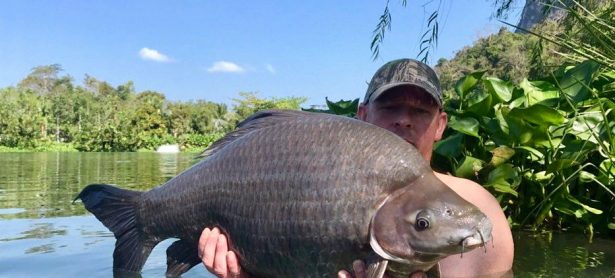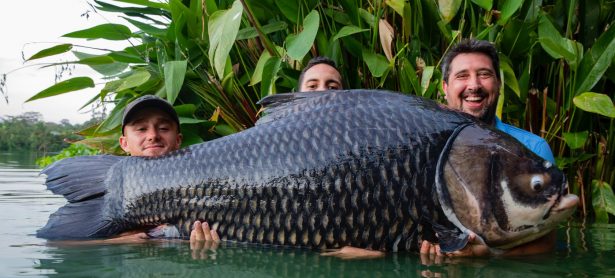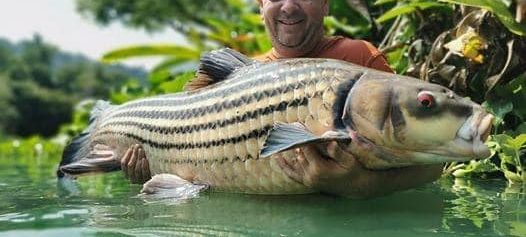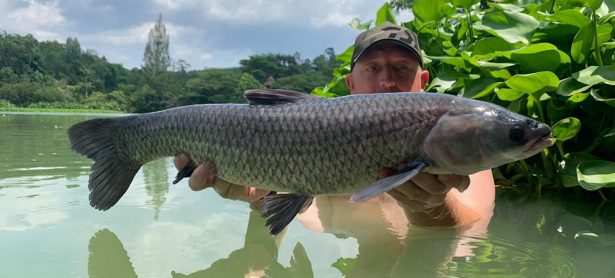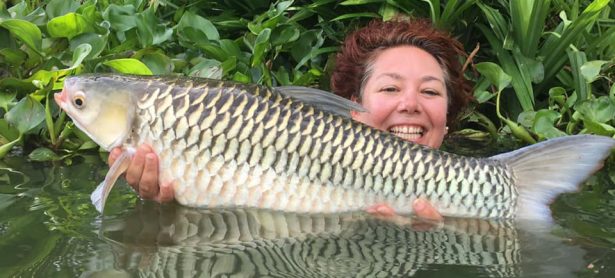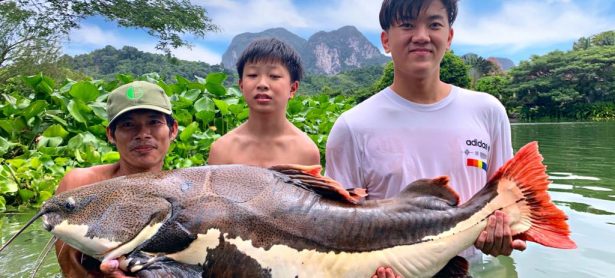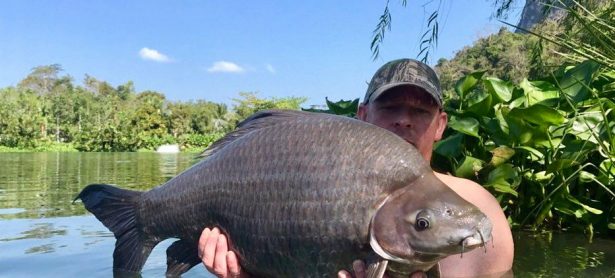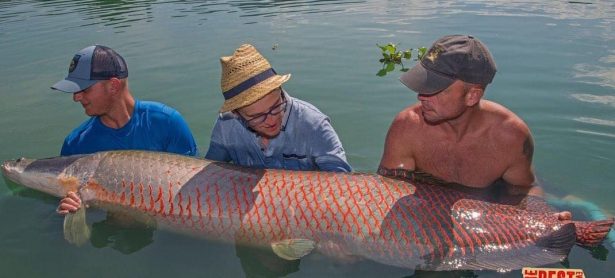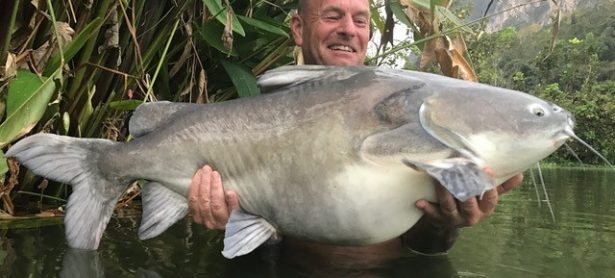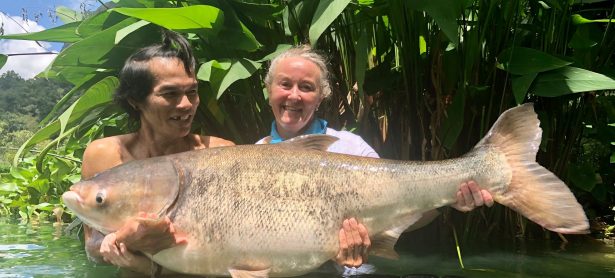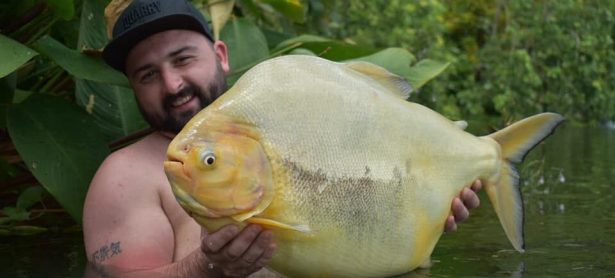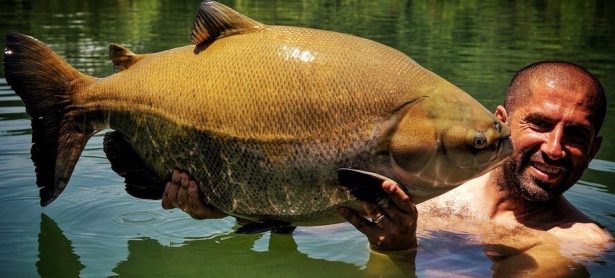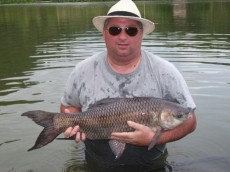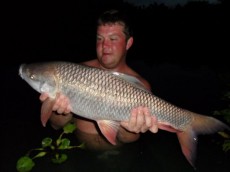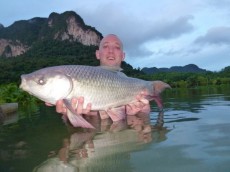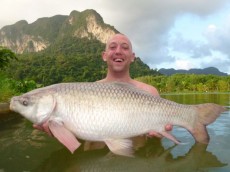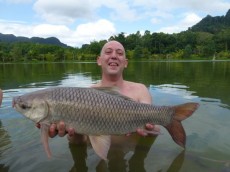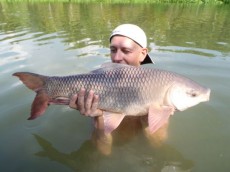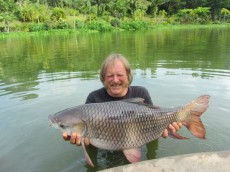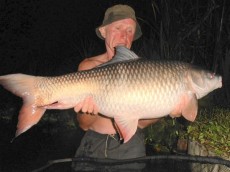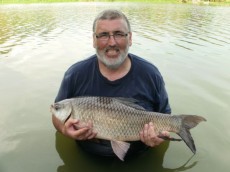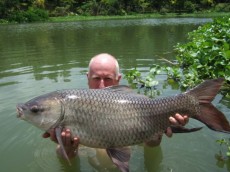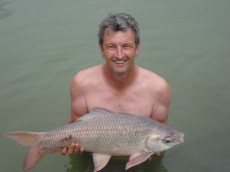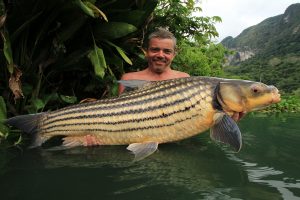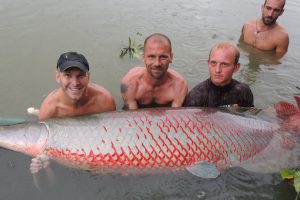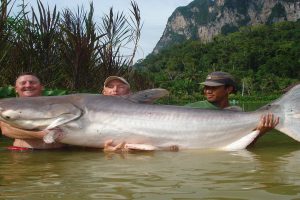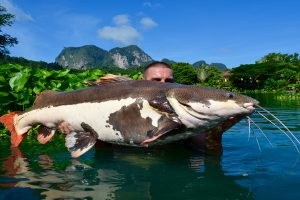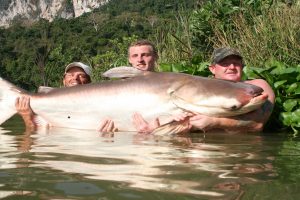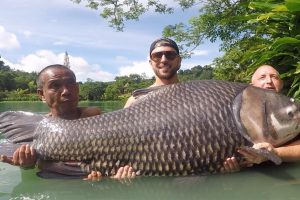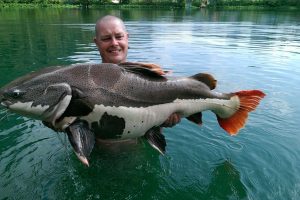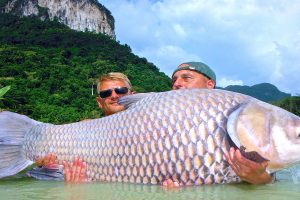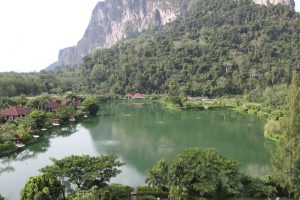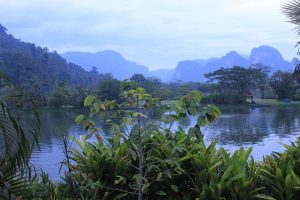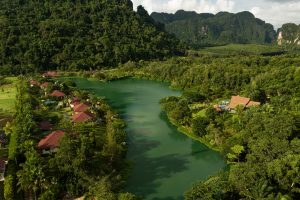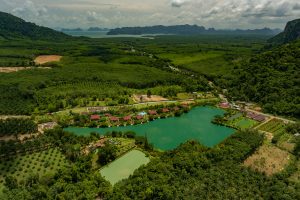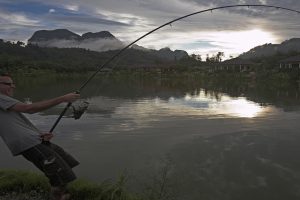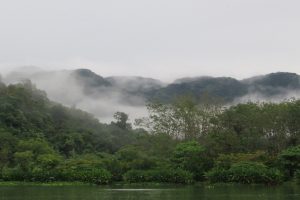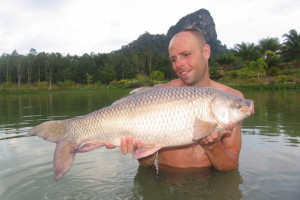 Name: Rohu (yissok tet, rahoo carp).
Name: Rohu (yissok tet, rahoo carp).
Species: Labeo rohita.
Thai name: Pla yissok tet.
Max length: 1m.
Max weight: 40kg.
IGFA record: 34lbs.4ozs-15.6kgs. Caught here at Gillhams fishing Resorts.
Diet: Shrimp, plankton, plants, fruit, maize, boilies, pellet, sticky rice and cereal-based baits.
To fish for our rohu use the same tactics as for Julian’s golden prize. We recommend you fish the bottom of the margin shelf and bait up with small pellet or maize feed little and often, float fishing or a light lead is best for these shy feeders its sometimes worth trying a small pop up try moulding some sticky rice around your hooklink then pulling your hair rigged pop-up into the rice ball.This method makes a deadly combination of a pop-up sitting over a small patch of rice. As with all the non-predatory fish in our lake, you need to create your own feeding area, and the tighter your feeding pattern the more fish you will concentrate in one area.
This member of the carp family has a small mouth with sharp cutting edges for feeding on water plants, but take care when playing these fish though as they have very soft lips. This carp will also jump when hooked, sometimes attaining heights of two metres! When targeting these fish you will also catch Julian’s golden prize carp, Siamese carp, plus all our other carp species, along with the Mekong catfish. A lot of our anglers use one rod with maize on their baited area, then fish with a fish bait on the outside edge of the baited area for predators who have come into the food zone attracted by the small bait fish feeding on the groundbait. The rohu is not as hardy as the other carp species, so please take extra care when handling them, get your camera ready beforehand, then snap off a couple of quick shots before placing them back in the landing net to recover. As with all our fish, use barbless hooks and only photo in the water.
General facts on rohu:
The rohu is a member of the carp family cyprinidae. They are distributed from Thailand through Myanmar to India and Pakistan. The rohu looks similar to a common carp with a scaled body and non-scaled head; the main difference being their protruding lips. They are a light brown colour with a pink tinge outlining their scales and fins. As fry they feed exclusively on zooplankton composed of rotifers and cladocerans, but as they grow they start to feed on algae then water plants.
They do not develop a taste for maize or other food items till they reach maturity at two years old. In the wild they spawn in the shallow margins of flooded rivers, preferring grassland, but the rohu does not spawn in still water. They are farmed throughout Asia where they are artificially spawned and stripped of their eggs. They are considered a delicacy in India, especially their roe, and their white, non-oily flesh is cooked deep fried in mustard oil. They are also farmed here in Thailand as a sporting fish, and their popularity comes as a hard fighting fish on light tackle, which makes spectacular leaps when hooked. The rohu has been recorded jumping up to three metres.



